SHARE THIS POST
The aviation industry is evolving as a lot of companies are transitioning from the traditional round dial to the modern glass cockpit displays.
Image Credit: Autoweek
Are you part of the change in this new era?
In this article, we’ll look at the features of electronic aviation displays, the differences between the round dial and the glass cockpits, how electronic displays are beneficial to pilots, passengers, and many more.
Round Dials vs Glass Cockpit Displays
Round dials also known as analog gauges have been in existence since when commercial planes were invented. It was the industry standard aviation display back then.
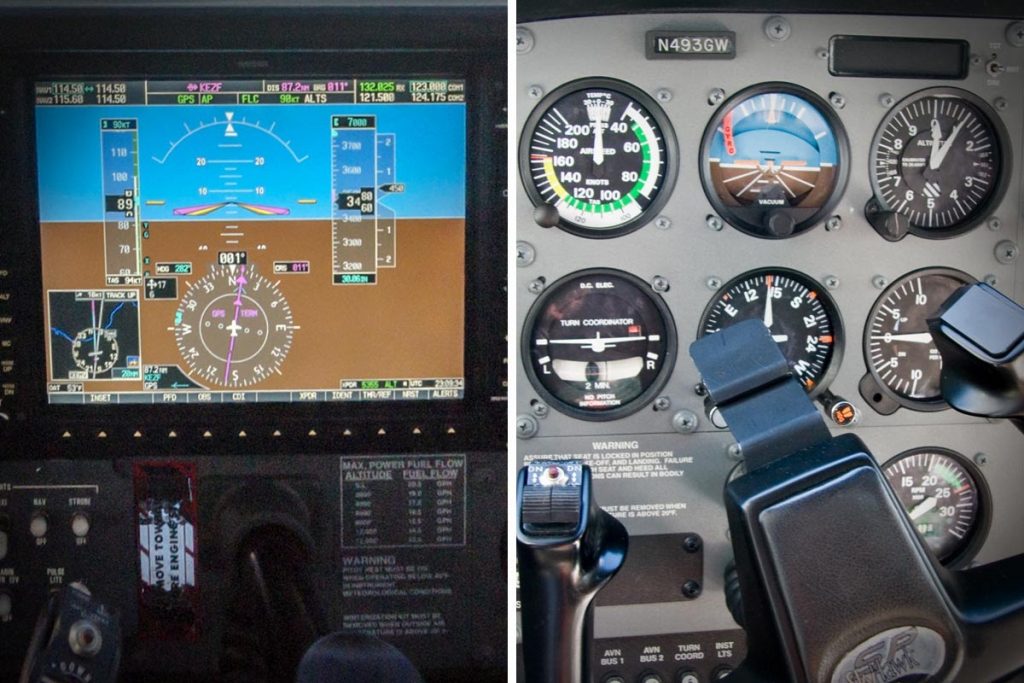
Image Credit: Boldmethod
Glass cockpits, also known as electronic flight instrument systems, began to appear in commercial airplanes in the 90s. By 2003, glass cockpits became the industry standard in the aviation sector.
However, some commercial aircraft still use the round dial display system which is outdated and can be unreliable.
With the power of digital technology, you can now order most general aviation airplanes that have glass cockpits and also upgrade any old commercial airplane from the traditional round dial to modern aviation displays.
If you take a look at the round dial cockpit display system, you’ll find the 6 basic aircraft instruments which include an altimeter, airspeed indicator, attitude, turn coordinator, vertical speed indicator, and heading indicator.
These are the essential flight instruments through which navigation is achieved by using en route charts.
Whereas with the glass cockpit display systems, the central flight instruments are merged into what is called the primary flight display (PFD).
Some of the features of the glass cockpit are similar to the round dial cockpit. Things like Altimeter and airspeed indicators have been transformed from their traditional round dial outlook to digital tape displays.
The glass cockpit also has another multifunction display (MFD) that comprises a moving map, weather report, and many more.
Let’s take a look at the differences between the glass cockpit and the round dial aviation display to put things in perspective.
 Image Credit: MDPI
Image Credit: MDPI
| Traditional Round Dial Cockpit | Glass Cockpit | |
|
Reliability |
The round dial instruments need regular maintenance and repair.
It can fail due to electrical or vacuum failures.
However, it can still function even when there is a power outage. |
The glass cockpit is highly reliable, depends on electricity and software stability.
It requires backup power to function during power failure. |
|
Ease of Use |
The pilot must scan all 6 instruments and reset the heading indicator every 15 minutes (depending on the type) to get all the information he needs.
The round dial instrument system is universal across various aircraft types and it has a lot of mechanical parts. |
All the information you need is visible on one screen. You don’t need to reset the headings.
You will require adequate training to understand all the controls and their functions.
The glass cockpit is not universal across all manufacturers |
|
Redundancy |
Pilots must understand the failure modes of each instrument and how to fix them.
For backup to work, it needs to use independent electrical systems. |
If the PFD fails, you can transfer all functions to the MFD.
Glass cockpit displays usually have a backup altimeter, attitude, and airspeed instruments.
Airplanes with dual altitude and heading reference systems (AHRS) and air data computers (ADC) have full redundancy. |
|
Flexibility |
Each of the 6 instruments performs a specific function. | The glass cockpit displays can be customized to have any feature that you desire.
You can also integrate engine performance to decrease pilot workload. |
|
Alerts |
With the round dial cockpit, you can leverage the heading indicator and altimeter for reminders. | Aural and visual annunciations and warnings are the standard methods of alerting the pilot toward abnormalities in altitude, airspeed, and many more. |
|
Connectivity |
The round dial system uses analog instruments and can’t connect with Bluetooth or any other technology. | There is Bluetooth connectivity that the pilot can use to upload cockpit information, flight plans, and entertainment. |
|
Weather |
For the round dial cockpit to have radar capability; it’ll require additional hardware and systems. | With the glass cockpit display, the pilot can leverage XM weather and ADS-B for radar reports, weather forecasts, and lots more. |
|
Visibility |
If the pilot is seated on the right seat, it can be stressful and hard to read the round dials due to parallax and distance.
However, the gauges can offer quick updates without concentrating on specific numbers. |
Eliminates parallax view complications from the right seat and the color design on the panel makes it easier to have access to vital information. |
|
Traffic Avoidance |
For the ADB-S to function, you will need to install additional hardware. | With the help of automatic dependent surveillance-broadcast (ADB-S) traffic awareness, pilots can prevent incidents. |
|
Cost |
The round dial has a low initial cost; however, you’ll need regular maintenance and repairs. | The glass cockpit has a high initial setup cost; however, it costs less to maintain. |
How Do Pilots Benefit From Glass Cockpits?
A glass cockpit is an airplane that has digital or electronic displays on LCD screens and not the old version analog round dials that are found in older aircraft.
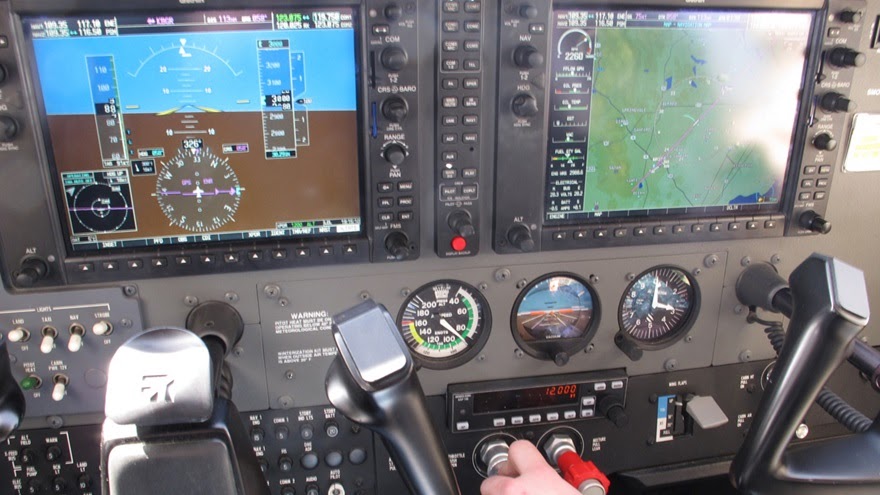
Image Credit: AOPA
Since glass cockpit displays are more automated and accurate, pilots can rely on them to make the flight process smooth and stress-free.
Furthermore, the glass cockpits display data clearly, thereby reducing pilot fatigue and workload. From this, it’s less likely that the pilot will miss any vital information during the T-formation scan.
Among all the benefits that pilots enjoy from flying with the glass cockpit display; the biggest of them all is More Accuracy.
Every pilot wants to have access to accurate information as quickly as possible so they can make informed decisions and with the glass cockpit, there is less room for error.
The glass cockpit display system has a self-checking feature that notifies the pilot of possible abnormalities before they become a huge emergency.
The system also has an inbuilt troubleshooting guide that pilots can use to fix several errors.
As glass cockpit aviation display systems become more popular, it is expected and projected that they will become the global standard for all aircraft soon.
However, any pilot that wants to switch from the traditional analog cockpit to the digital era will have to undergo additional training to get used to the new system and ensure a safe flight for everyone on board.
Advantages of Flying a Glass Cockpit
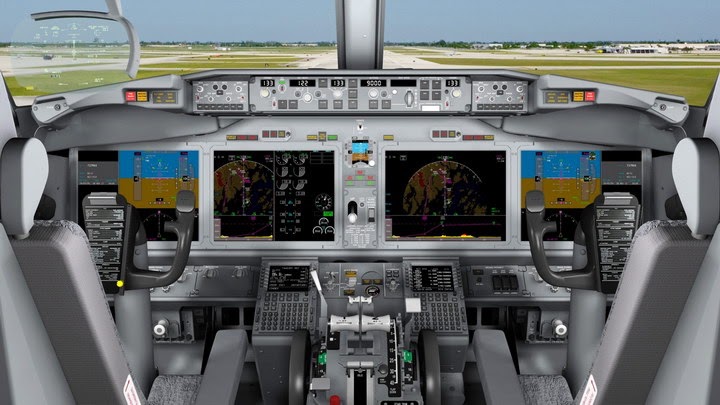
Image Credit: Displaydaily
It’s time to ditch the old ways and embrace the digital era.
Here you’ll find the various advantages you’ll enjoy as a pilot once you start flying a glass cockpit.
Precision
With the glass cockpit display, you no longer need to interpret the position of your airspeed indicator or to read the altimeter’s needles; you’ll find the numerical values that you seek on the display.
Graphical Weather
The glass cockpit ensures that you receive weather forecasts, satellite imagery, radar reports, pilot reports, and much more digitally through XM weather and ADS-B.
Terrain Awareness and Synthetic Vision
Terrain overlays and Synthetic vision play a vital role when it comes to preventing controlled flight into terrain (CFIT) accidents and situational awareness.
On-Screen Checklist
Instead of writing your checklist on paper and misplacing it, you can input it in your glass cockpit aviation display and have direct access to it whenever you like.
Faster Interpretation of Data
Since the glass cockpit displays provide accurate data, it will help you to quickly interpret your position, altitude, and speed among other things.
Bluetooth Syncing
If you are tired of entering your flight plan manually, you can connect to the airplane’s avionics via Bluetooth and sync your flight plan using ForeFlight.
ForeFlight is a built-in flight app on iPhone, iPad, and web.
Warnings and Annunciations
There are fewer warning lights, voice annunciations, and color-encrypted messages on the round dial system. However, with the glass cockpit display, the warning signs are all over the place.
You will surely notice when one lights up or beeps.
Passenger Entertainment Displays
Every airline wants customer retention and loyalty as they expect the customers to always use their service when booking future flights.
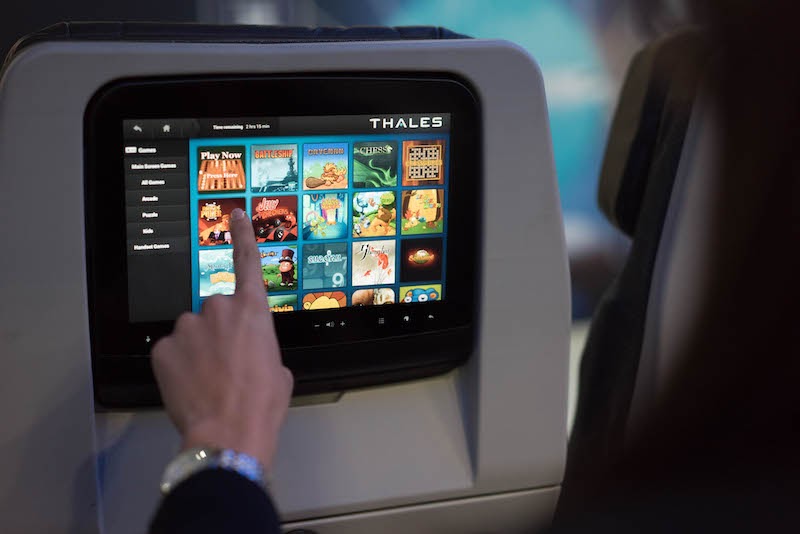
Image Credit: Aviation Business News
There is tough competition in the sector and every commercial airline will need to work round the clock to improve the passengers flying experience so they can become loyal customers.
Airlines can design the aircraft interiors with inflight entertainment systems to entertain the passengers through blockbuster movies, Tv shows, music, audiobooks, and many more.
As more travelers bring laptops, tablets, smartphones, handheld game consoles, and other gadgets on board to make their flight a memorable one; airlines can still leverage inflight entertainment systems to supplement what most travelers came with.
Benefits of Inflight Entertainment Systems
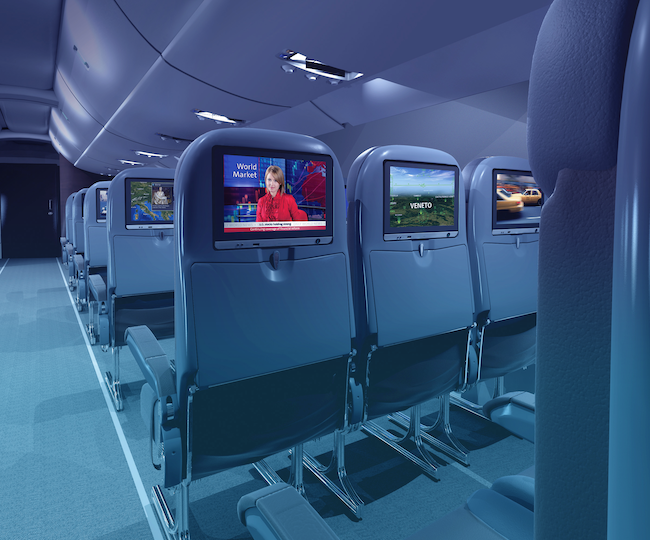
Image Credit: Aviation business news
Customer Satisfaction
A traveler’s in-flight experience involves many factors; from the food that they ate during their flight, inflight materials like movies or games that are provided by the airline, and their interaction with the flight staff.
As an airline, if you add inflight entertainment monitors to your aircraft; your passengers will be happy with your airline because it shows that you care about the comfort of their flight experience.
Passenger Inclusivity
Not all travelers will travel with their laptop, tablet, or handheld gaming device to kill off boredom. If your airline has no inflight entertainment system, only those who brought their gadgets will be able to watch movies, play music, and games.
The rest will have no entertainment.
Long-flight Distractions
It is during long flights that you’ll get to see the importance of the in-flight entertainment system. Statistics have shown that 41% of travelers watch movies when flying so this option must become available.
Potential Customization
Have it in mind that every traveler wants an amazing flight experience. Some are kids traveling with their parents for the first time, while some are older adults. It makes a whole lot of sense to have a customizable in-flight entertainment system where a customer has multiple options for entertainment.
A music lover can choose to play music while a movie lover can watch movies and have a great flight experience.
Conclusion
As an airline operating the outdated round dial cockpit system or perhaps you want to add more features to your modern aircraft; we are here to serve you.
It’s time to move out of your comfort zone and embrace change.

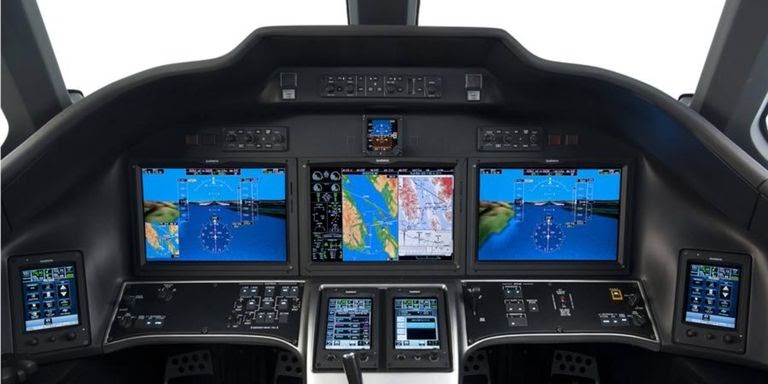






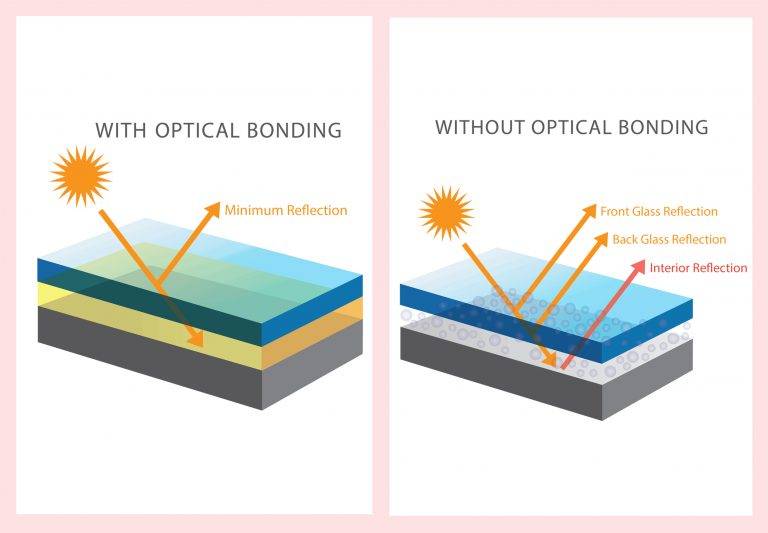

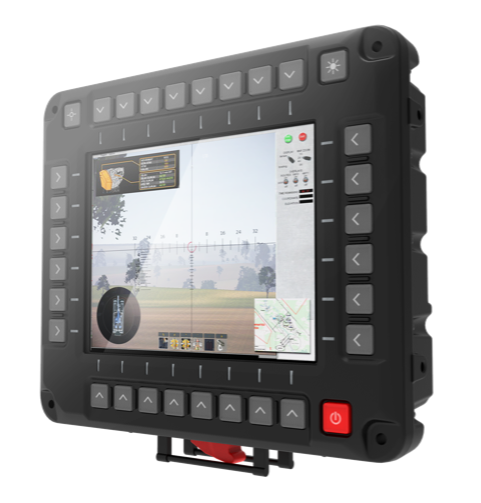



 Submit your project information
Submit your project information Speak with an expert display advisor
Speak with an expert display advisor